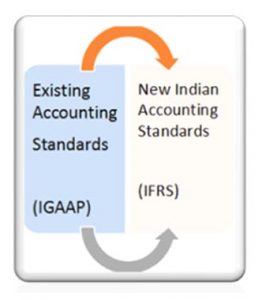Depreciation and Impairment: Understanding their relation dynamics in IFRS

1. What is IFRS?: The International Financial Reporting Standards (IFRS for short) are a set of international accounting standards that establish how particular types of transactions and other events in the financial statements should be reported.
IFRS were established to have a common accounting language, so businesses and accounts can be understood from one company to another and from one country to another.
2. IFRS relevancy & dynamics: The objective of IFRS is to maintain stability and transparency throughout the financial world. This allows companies and individual investors to make informed financial decisions as they can see exactly what has been going on with a company they want to invest in. Financial statements prepared using a common set of accounting standards help investors understand investment opportunities better rather than financial statements prepared using a different set of national accounting standards. Heterogeneity leads to the creation of obstacles and barriers that take valuable time from international investments.
3. Difference between Depreciation and Impairment: As we know, impairment (of an asset) occurs usually when the fair value of an asset unpredictably falls below its actual value while depreciation is the decrease in the value of an asset gradually, however the difference between the two is apparent. Firstly, Impairment can occur in a wider asset class than depreciation i.e. plant and equipment, receivables, investments etc. meanwhile depreciation occurs only on plant and equipment. Secondly, Impairment can occur when there is a variance in the technical, environmental and economic aspects. Depreciation, however, is a exclusive concept ready to prevail anytime in the accounting world.
4. Relevancy with depreciation: Knowingly, depreciation is the mechanism by which the wear and tear and loss of value suffered by a good is recognized due to the use made of it over time.
Depreciation has a big financial effect, which is perhaps the most important. When there is depreciation, the wear and tear suffered by the assets can be taken to the expense or income statement. Consequently, when there is an expense, the profit is diminished since the profit is the result of subtracting the expenses and costs from the income. Thus, depreciation has a direct effect on the utility of the company, from which we can conclude that the more assets are used, the more they generate income but at the same time they wear out more, which implies a higher depreciation expense, which in turn decreases utility.
Depreciation, in addition to having a direct effect on profit, also has an effect on the financial structure of the company, in the balance sheet, since when an asset is worn down, its value within the company decreases, so that each time accounting asset depreciates, its book value is diminished until it disappears.
5. Relevancy with impairment: Moreover, asset value impairment is defined as a loss that occurs when the carrying amount of an asset exceeds its recoverable amount, that is, if the company wants to sell its inventories, an intangible asset or value the assets during their useful life, you must compare the asset’s book value (cost – (less) depreciation – (less) impairment losses) and its recoverable value (higher value between fair value and use value), if the book value is greater than the recoverable value, the company must recognize an impairment loss.
Impairment should not be considered as a method to quickly determine depreciation or amortization recognition, it should be viewed as a good practice for assets to be valued closer to an economic value or market value, than the information provided. for each entity is useful to its users, and also promotes the development of efficient, more transparent and real capital markets.
The possible impairment must be evaluated at least at the end of the year, determining the possible existence of one or more events that have occurred after their initial recognition and that cause a reduction or delay in the estimated future cash flows, which may be motivated by the insolvency of the debtor.
If the amount of the loss decreases due to causes related to a subsequent event, the reversal will be recognized as income in the profit and loss account. Said reversal will be limited to the book value of the loan that would be recognized on the reversal date if the impairment had not been recorded.
The reference to the present value (assets), occurs when the impairment of the value of “Loans and receivables”, of “Investments held to maturity”, of “Investments in the equity of group companies, multi-group and associated companies” And “Financial assets available for sale”, in the case of investments in equity instruments whose value cannot be reliably determined and are valued at cost.
 6. GAAP and IFRS: Under GAAP, Depreciation is spoken of as impairment, wear and tear from the use of an asset however with IFRS, these two terms are totally different and should not be confused, Depreciation is technically the distribution of the cost of the asset during the years of Its useful life, on the other hand, impairment should be understood as a procedure by which the organization recognizes unforeseen demerits in said depreciation or amortization, caused by internal and external factors, these factors may be external sources like Market value, Changes in the environment (technologically, market, economic, legal) or Internal sources like Obsolescence and physical deterioration..
6. GAAP and IFRS: Under GAAP, Depreciation is spoken of as impairment, wear and tear from the use of an asset however with IFRS, these two terms are totally different and should not be confused, Depreciation is technically the distribution of the cost of the asset during the years of Its useful life, on the other hand, impairment should be understood as a procedure by which the organization recognizes unforeseen demerits in said depreciation or amortization, caused by internal and external factors, these factors may be external sources like Market value, Changes in the environment (technologically, market, economic, legal) or Internal sources like Obsolescence and physical deterioration..





Responses